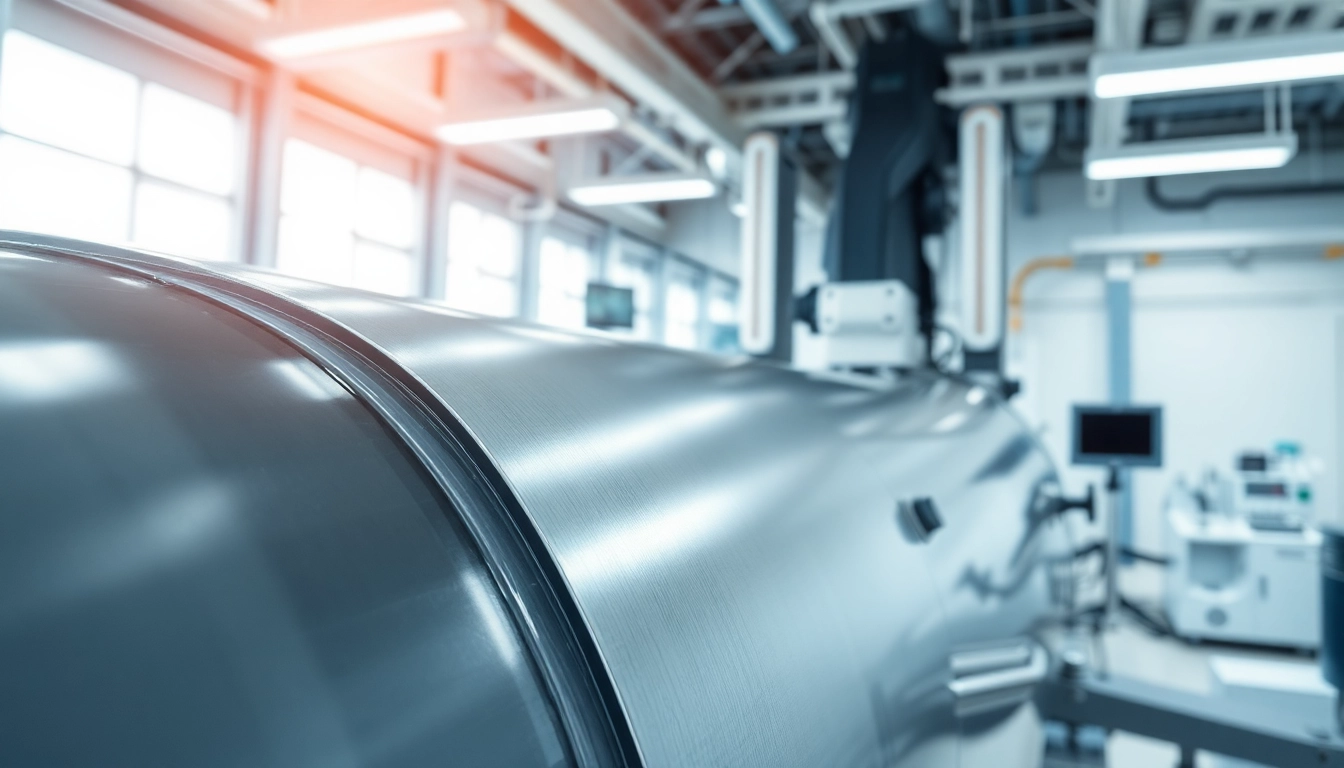Understanding Adhesive Films and Their Importance
Adhesive films play a crucial role in modern manufacturing and materials science, providing both strength and versatility. As industries evolve and demand for higher performance materials increases, understanding the benefits and applications of adhesive films becomes essential for engineers and manufacturers alike. These precision-engineered films offer unique properties that enhance structural bonding across various fields, including aerospace, automotive, and defense. For an in-depth exploration of high-performance adhesive films, visit https://www.makobond.com/adhesives-films.
What Are Adhesive Films?
Adhesive films are thin, solid layers of adhesive that are often preformed on a carrier material. They are designed to bond two surfaces when activated by heat, pressure, or a combination of both. This bonding technique is especially advantageous in applications where clean, high-strength bonds are crucial. Adhesive films eliminate the mess associated with liquid adhesives and provide a uniform thickness, leading to more consistent performance in bonding scenarios.
Key Properties and Benefits
The advantages of adhesive films are numerous:
- Controlled Application: Unlike liquid adhesives, which can create uneven layers, adhesive films allow for precise application in measured amounts.
- Improved Strength: Adhesive films often exhibit enhanced strength characteristics, providing robust bonds that can withstand significant stress and strain.
- Compatibility: They are compatible with a wide range of substrates, including metals, plastics, and composites.
- Temperature Resistance: Many adhesive films are engineered to withstand high temperatures, making them suitable for automotive and aerospace applications.
- Reduced Curing Time: Activation methods lead to faster curing times compared to traditional adhesives.
Common Applications in Various Industries
The versatility of adhesive films allows them to be integral in various fields:
- Aerospace: Lightweight bonding solutions that can withstand extreme conditions are essential in the aerospace industry, making adhesive films indispensable.
- Automotive: The automotive sector uses adhesive films for body panels and interior components due to their capacity to absorb vibrations and provide structural integrity.
- Electronics: Adhesive films serve as protective coatings as well as bonding agents in electronic devices, ensuring durability and performance.
- Marine: The marine industry benefits from adhesive films that resist water and environmental degradation, enhancing longevity.
Types of Adhesive Films Available
Heat-Activated Adhesive Films
Heat-activated adhesive films require a specific temperature to bond effectively. These films are often used in composite materials, where controlled heating is applied during manufacturing. The activation allows the adhesive to flow into the surfaces being bonded, creating a strong chemical and mechanical bond.
Pressure-Sensitive Adhesive Films
Pressure-sensitive adhesive films bond upon the application of firm pressure. These films are popular for applications requiring quick bonding without the need for heat activation, making them ideal for temporary bonds or where immediate adhesion is required.
Specialized Heavy-Duty Adhesive Films
Designed for demanding applications, heavy-duty adhesive films provide exceptionally strong bonds in harsh environments. They are suited for structural applications where durability and longevity are required, such as in construction or heavy machinery.
Selecting the Right Adhesive Film
Factors to Consider When Choosing
Choosing the appropriate adhesive film depends on several critical factors:
- Substrate Material: Different materials have unique bonding characteristics that may necessitate specific adhesive compositions.
- Environmental Conditions: Consider the end-use conditions, including exposure to heat, moisture, and chemicals.
- Performance Requirements: Evaluate the required bond strength and elasticity for the application.
- Ease of Application: Some adhesive films are easier to handle than others; consider the production process when selecting films.
Performance Metrics and Testing Standards
To ensure that adhesive films meet application criteria, rigorous testing is paramount. Common performance metrics include:
- Shear Strength: Indicates the amount of force required to break the bond.
- Tensile Strength: Assesses the stretching limits before failure.
- Peel Strength: Measures the force needed to peel the bonded surfaces apart.
Following established bonding standards ensures reliability and quality across applications.
Comparing Cost and Efficiency
While the initial cost of adhesive films may be higher than conventional adhesives, their enhanced performance can lead to cost savings over time. Assessing the total cost of ownership, including material waste, labor, and production downtime, will provide a clearer picture of efficiency and value in the long run.
Application Techniques for Optimal Bonding
Preparation and Surface Treatment
The success of bonding hinges on proper surface preparation. Cleaning the substrate to remove oils, dust, or contaminants ensures maximum bond efficiency. Surface treatments such as sanding, priming, or using adhesives suited to specific materials can also enhance adhesion.
Application Methods: Manual vs. Automated
There are two primary methods for applying adhesive films: manual and automated. Manual application may be suitable for small-scale or custom projects, whereas automated techniques are often preferred in mass production for consistency and speed. Industry trends lean towards automation, maximizing efficiency and minimizing human error.
Achieving Ideal Bonding Conditions
Achieving ideal bonding conditions involves controlling environmental parameters such as temperature and humidity during film activation. Additionally, factors like pressure application and curing time directly influence bond performance. Monitoring these variables ensures a robust, long-lasting bond.
Future Trends in Adhesive Film Technology
Advancements in Film Materials
As technology progresses, new materials for adhesive films are emerging. Innovations include bio-based adhesives that offer sustainability without compromising performance, alongside advancements in nano-coating technology that promise greater strength and versatility.
Integration with Smart Manufacturing
The integration of adhesive films into smart manufacturing processes showcases significant potential. With the rise of Industry 4.0, adaptive manufacturing lines can adjust parameters in real-time to fine-tune bonding processes, ultimately improving efficiency and reducing waste.
Sustainable Practices in Adhesive Film Production
Environmental sustainability is becoming increasingly important in adhesive film production. Manufacturers are exploring eco-friendly materials and processes that minimize waste and energy consumption, ensuring that the demand for performance does not come at the cost of environmental health.
